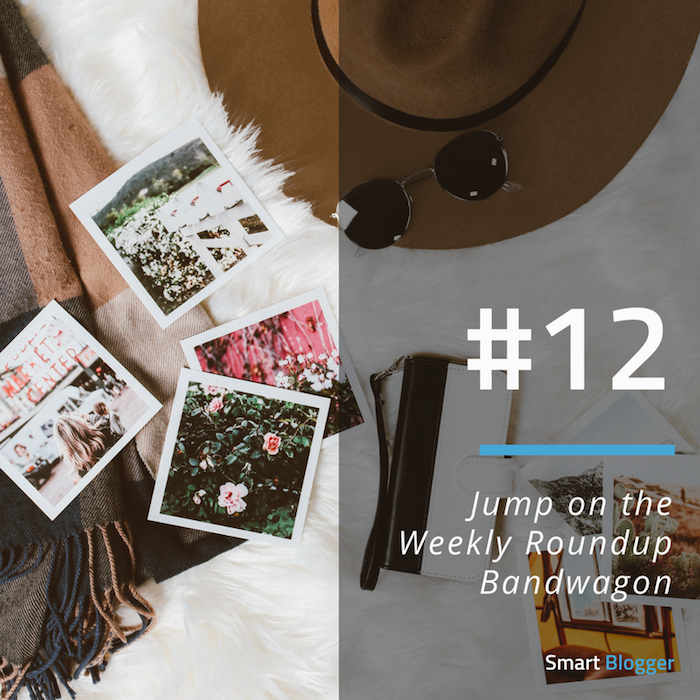
Will it all be worth it?
You can’t help wondering sometimes.
Every spare minute, you’re glued to your computer, reading, writing, doing all you can to grow your blog and build your audience — all on the shaky promise that someday your efforts will pay off.
But sometimes, that someday feels far out of reach. Sometimes, you can’t help wondering whether that day will ever come, or whether you’re just wasting your time.
Well, hang in there, my friend. Because you never know what kinds of opportunities your blog can bring you.
And they might take time, but for all you know, they might be right around the corner.
To prove it, I asked 26 of my blogging friends to share the coolest, craziest opportunities their blogs made happen in their early days — that is, before they amassed a huge following and made tens of thousands of dollars off their blog.
Ready to dive in?
#1. Jeff Bullas / Jeff Bullas
 One of the “craziest” opportunities I had happened about a year after starting the blog when I was invited to speak in New Zealand.
One of the “craziest” opportunities I had happened about a year after starting the blog when I was invited to speak in New Zealand.
It came about because a millionaire who was reading my blog, loved my content and had an idea and sent me an email.
After the event he asked me to join the board of a new tech startup and offered shares.
Five years later the company has raised $3 million and is continuing to grow.
That company is Shuttlerock.
We were a winner in Facebook’s 2016 Innovation Spotlight providing a scalable creative solution to unlock the true power of Facebook Advertising.
#2. Ryan Biddulph / Blogging from Paradise
 The coolest opportunity that arose for me as a beginning blogger was being asked to interview Thrillionaire celebrity Nik Halik. I had no clue how to blog, let alone conduct an interview. Since this was some 7 years ago I literally pressed “record” on a tape recorder – I am not kidding – received the call on my land line (resistant to cell phone usage back then) and preserved the interview for transcribing.
The coolest opportunity that arose for me as a beginning blogger was being asked to interview Thrillionaire celebrity Nik Halik. I had no clue how to blog, let alone conduct an interview. Since this was some 7 years ago I literally pressed “record” on a tape recorder – I am not kidding – received the call on my land line (resistant to cell phone usage back then) and preserved the interview for transcribing.
I learned a valuable lesson too; be prepared! I asked two canned questions sent to me by his press guy and Nik told me he was bored of the same old questions as this was his 10th interview of the day. Because I spent 20 minutes researching him earlier that day I nimbly shifted and asked probing, interesting questions that made for a great interview.
#3. Chris Guillebeau / The Art of Non-Conformity
 In my early days of blogging, Air New Zealand flew me to the Cook Islands for a 24-hour event.
In my early days of blogging, Air New Zealand flew me to the Cook Islands for a 24-hour event.
It was a whirlwind visit and I learned that I don’t like sponsored trips (too much expectation on behalf of the sponsor, even when they say otherwise…), but I was still grateful for the experience.
#4. Danny Iny / Mirasee
 The craziest opportunity that arose from blogging was that I ended up co-authoring a book with Guy Kawasaki and other A-listers when I was an unknown. Here’s how it happened:
The craziest opportunity that arose from blogging was that I ended up co-authoring a book with Guy Kawasaki and other A-listers when I was an unknown. Here’s how it happened:
Firepole Marketing (now Mirasee) was just a tiny blog with less than 1,000 subscribers, when I had the opportunity to guest blog on Copyblogger. My post was “38 Critical Books Every Blogger Needs to Read.” Number 12 on the list was The Art of the Start by Guy Kawasaki.
It must have caught the attention of Guy and/or his publicist, because a few days later, I received an email from Guy thanking me for including his book. He said he had a new book coming out and offered me a review copy and an interview.
Of course, I seized the opportunity. I spent 15 hours preparing for the interview to make it so good that Guy would want to share it with everybody. Afterwards, I posted the interview on my blog and created a video to promote the book on YouTube. I wrote reviews on Amazon and other bookseller websites—I did everything I could think of to get the word out.
Months later, I invited Guy to contribute to my book, Engagement from Scratch!, and he said yes. And that’s how blogging helped me co-author a book with Guy Kawasaki.
#5. Richard Lazazzera / A Better Lemonade Stand
 Blogging quite literally changed my life. Within months of starting my ecommerce blog, A Better Lemonade Stand, I wrote a really long-form piece of content that drove thousands of brand new visitors to my site. One of those visitors was the director of marketing for Shopify. He reached out to me via email and we started to build a relationship.
Blogging quite literally changed my life. Within months of starting my ecommerce blog, A Better Lemonade Stand, I wrote a really long-form piece of content that drove thousands of brand new visitors to my site. One of those visitors was the director of marketing for Shopify. He reached out to me via email and we started to build a relationship.
About a year later, I moved to Toronto. When the director at Shopify heard, I was offered a position at Shopify which I jumped on. That position allowed me to reach two million visitors per month through their blog (while still growing my personal blog), write a full length book, and participate in the IPO of Shopify.
I’ve since left Shopify and continue to build A Better Lemonade Stand and several other companies. To think it all began with a single blog post still amazes me.
#6. Ian Cleary / Razor Social
 Within six months of launching the blog it was voted one of the top ten social media blogs in the world by a competition run by Social Media Examiner.
Within six months of launching the blog it was voted one of the top ten social media blogs in the world by a competition run by Social Media Examiner.
That was pretty amazing for me because I started the blog based in Ireland and I was the only European blog on the list. This rapidly helped me become an influencer in the Social Media Space and generated me significant business.
#7. Amy Lynn Andrews / Amy Lynn Andrews
 In 2006, when I had been blogging only a few years and blogs were still somewhat of a novelty, I was contacted by a writer from TIME Magazine. She had found my blog and wanted to interview me for a story she was writing about one of my main topics.
In 2006, when I had been blogging only a few years and blogs were still somewhat of a novelty, I was contacted by a writer from TIME Magazine. She had found my blog and wanted to interview me for a story she was writing about one of my main topics.
For some reason I didn’t think it could possibly be true, but a few months later I found myself in the print edition of TIME Magazine (in March 2007). Unfortunately I wasn’t savvy enough to maximize the exposure, but I did keep in contact with that journalist and enjoyed her friendship for several years.
#8. Dave Chesson / Kindlepreneur
 You never know who is reading or following your content. I found out that my all time favorite writer, and multi-NYT Bestseller, Ted Dekker, had come across my work.
You never know who is reading or following your content. I found out that my all time favorite writer, and multi-NYT Bestseller, Ted Dekker, had come across my work.
This led into getting to meet him for coffee, and ultimately, become an Advanced Review Copy (ARC) reader as well as helping with some of his book marketing projects.
#9. John Lee Dumas / EOFire
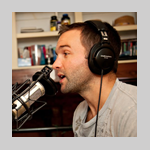 Very early on I had the opportunity to be featured on some pretty big sites as a guest poster, which wouldn’t have been possible if I hadn’t had the EOFire blog up and running. One of the first was on Think Traffic (now Fizzle.co), and we were featured there within just one month of having started our own blog.
Very early on I had the opportunity to be featured on some pretty big sites as a guest poster, which wouldn’t have been possible if I hadn’t had the EOFire blog up and running. One of the first was on Think Traffic (now Fizzle.co), and we were featured there within just one month of having started our own blog.
This first guest post gave us powerful momentum and exposure, which we then used to request to guest post on other big name sites like Social Media Examiner, Copy Blogger, Content Marketing Institute and over twenty others.
Each new guest post opportunity brought with it exposure, more momentum, and most importantly, a very valuable friendship with people I’m proud to still call friends today.
#10. Aaron Orendorff / Iconicontent
 Back in March 2014, I had just started blogging. Basically, it was me, my mom, and literally 261 unique visitors (I checked with Google Analytics just to be accurate).
Back in March 2014, I had just started blogging. Basically, it was me, my mom, and literally 261 unique visitors (I checked with Google Analytics just to be accurate).
I’d posted six times, when — out of the digital blue — I got an email about this post, Getting Your Customers to Hold It, Love It, and Give It Money:
I nearly lost my newbie-blogging mind. Of course, I said yes. And somewhat embarrassed myself by asking for a link:
“This is for a book project, so the linking is tough — but I’ll give you lots of love otherwise,” was Ann’s kind response.
Three months later, I’d secured my very first guest post at Copyblogger and I knew enough — just enough — to immediately turn around and pitch Ann on a MarketingProfs guest post. I composed a full article, sent it off, and was in. Everything I’ve done over the last three years has been built on that foundation. And I owe it all to one nice lady who stumbled on my blog when I had no business getting visitors of her clout (or visitors at all for that matter).
#11. Sean Ogle / Location Rebel
 About six months after starting my blog, I wrote a post about quitting my job as a financial analyst. I had no idea what I was going to do after that, but I knew I was ready for something different.
About six months after starting my blog, I wrote a post about quitting my job as a financial analyst. I had no idea what I was going to do after that, but I knew I was ready for something different.
The following week I received an email from a reader congratulating me on taking the leap, and telling me that he was looking to bring an intern out to Asia to help him with the online marketing for his company. I’d work part time and he would pay my basic living expenses, while teaching me the ins and outs of the digital world.
Six weeks later, I was on a flight to Bangkok where I would live for the next seven months – and it would set the foundation for my life and business for years to come. I haven’t had a real job since.
It never would have happened had I not started the blog, and positioned myself for a big opportunity to come my way.
#12. Camilla Hallstrom / Influence with Content
 Back when I got started, I had NO clue what I was doing.
Back when I got started, I had NO clue what I was doing.
I wasn’t sure what worked and what didn’t. Sure, through programs like Serious Bloggers Only I knew what sorts of posts got results, but I still felt uncertain about putting anything out there. What was the point, really? What if I was just wasting my time on this blogging thing? A nagging voice inside my head told me I would end up empty handed without anything to show for it…
That’s why it felt amazing when one of my first posts got tons of shares and comments. But the best part? Brian Tracy (the sales mogul) shared it on his Facebook page (at the time, he had around 1.5 million followers). And that same post went on to win the title of “Most Epic Post” in a contest here on Smart Blogger (Boost Blog Traffic back then).
That’s the moment I understood exactly how powerful blogging can be. You can get noticed by anyone and you can open doors that right now seem firmly shut.
Apart from this, blogging has made such a difference in my life. I have met new friends who have the exact same interests as I do — that NEVER happens offline (for some reason, people’s eyes glaze over whenever I try to start a discussion about a content idea I just heard about). I’ve gotten job offers in big part thanks to my blogging experience and I started my freelance career because of it.
#13. Ashley Faulkes / Mad Lemmings
 When you are just getting started, you don’t really expect anything crazy to happen. But sometimes you get a big surprise!
When you are just getting started, you don’t really expect anything crazy to happen. But sometimes you get a big surprise!
One of the things I did when starting out was to create a post featuring all the influencers in the blogging and social media scene. It got a lot of people’s attention and connected me with a lot of influencers very quickly. After all, it was a post with the sole purpose of highlighting these influencers (and letting them know of course :>).
Now, having connected with these influencers, I had the opportunity to take it a step further. I started inviting a lot of them on my brand spanking new podcast. Of course, I did not expect many of the bigger names to say yes. Surprisingly, I got quite a few big bloggers on the show, including some who were very reluctant to put themselves out there (not everyone is a lover of the microphone you know :>). Some of the people I got on my podcast included: Rebekah Radice, Ileane Smith, Ann Smarty, Susan Gilbert, John Paul Aguiar, Ian Anderson Gray and more. No, not Seth Godin, but still, for a complete beginner not bad I think!
What blew me away is that getting in contact with people you look up to is not as hard as it seems (if they don’t have an assistant answering their mails :>). Don’t forget, they were exactly where you are not too long ago. And most are more than happy to help out a newbie! Give it a shot.
#14. Daniel Scocco / Daily Blog Tips
 Blogging is a great way to showcase your expertise and expand your network. I learned this when, back in 2009, I landed a consulting gig with an agency of the United States Government! The guys from Voice of America (the official external US broadcaster) were planning to launch a new site, and they wanted to learn what would be the best ways to optimize and promote it. It was a very interesting experience, and certainly a nice touch to my CV!
Blogging is a great way to showcase your expertise and expand your network. I learned this when, back in 2009, I landed a consulting gig with an agency of the United States Government! The guys from Voice of America (the official external US broadcaster) were planning to launch a new site, and they wanted to learn what would be the best ways to optimize and promote it. It was a very interesting experience, and certainly a nice touch to my CV!
Practically speaking, this happened because I wrote a lot of content on related topics (website optimization, SEO, content marketing, website promotion), and that content got linked from other bloggers and site owners, and eventually it ranked well on Google. Then when the guys from VOA started doing some research they came across my stuff, liked it, and decided to get in touch.
#15. Meera Kothand / Meera Kothand
 One of the craziest opportunities I received when I started out was not only having my guest post accepted at Marketing Profs but also getting an invitation to record a mini video training for their paid members.
One of the craziest opportunities I received when I started out was not only having my guest post accepted at Marketing Profs but also getting an invitation to record a mini video training for their paid members.
It was scary but I took the plunge and did the training for them and got paid for it as well. This was when my blog was barely six months old. I’ve always believed in guest posting but its benefits reach far wider than just getting traffic and growing your list. It gets you exposure, introduces you to a new audience and paves the way for other opportunities like it did in my case!
#16. Dave Schneider / Ninja Outreach
 Well I got the opportunity to join my current startup, Ninja Outreach! The opportunity arose when I was invited on a podcast with my now partner Mark, who read my blog, only a few months after I started it.
Well I got the opportunity to join my current startup, Ninja Outreach! The opportunity arose when I was invited on a podcast with my now partner Mark, who read my blog, only a few months after I started it.
After the podcast was published he reached back out to me and we discussed some ideas we had for building marketing tools in the space. We decided it made sense to work together on it. That was three years ago, and NinjaOutreach is doing over half a million dollars a year now.
#17. Nathan Chan / Foundr
 I can’t put this down to any one situation! Ever since we started the Foundr blog this has given us opportunities to interview some of the greatest entrepreneurs of our generation (Richard Branson, Arianna Huffington, Seth Godin etc.) and with this we’ve also been able to connect with some amazing entrepreneurs in our community which has been an extremely rewarding experience.
I can’t put this down to any one situation! Ever since we started the Foundr blog this has given us opportunities to interview some of the greatest entrepreneurs of our generation (Richard Branson, Arianna Huffington, Seth Godin etc.) and with this we’ve also been able to connect with some amazing entrepreneurs in our community which has been an extremely rewarding experience.
#18. Julie Harris / Whiskey and Red
 The craziest opportunity that arose from blogging was being invited to speak at my first live class. I had been blogging for about six months when I was contacted by the Hawaii Chapter of a national women’s entrepreneur association, “Femfessionals” to speak at their Hawaiian Chapter dinner. They had found my name through another local business I had worked with in the past and found their way to my blog. I had just posted about “Charging What You’re Worth” and they loved the post so much they asked me to present on the same topic live, in front of their whole local chapter.
The craziest opportunity that arose from blogging was being invited to speak at my first live class. I had been blogging for about six months when I was contacted by the Hawaii Chapter of a national women’s entrepreneur association, “Femfessionals” to speak at their Hawaiian Chapter dinner. They had found my name through another local business I had worked with in the past and found their way to my blog. I had just posted about “Charging What You’re Worth” and they loved the post so much they asked me to present on the same topic live, in front of their whole local chapter.
There was a whole catered dinner, wine and beverages, and a room full of local entrepreneurs waiting to hear what I had to say. I was so crazy nervous but excited. This opportunity then opened more doors to new clients, new projects, and continued speaking gigs. My business was so new at that point, I didn’t have much of a portfolio, and my small social following was pretty slim, but I had a pretty extensive business blog, and that was what convinced them that I was the perfect speaker for them.
#19. Franklin Hatchett / Online Dimes
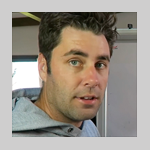 When I first started blogging I came across a new internet marketing method with Shopify. I ended up writing about it on my blog and uploading a Video to Youtube. To my surprise this became a great opportunity and the opportunity grew my blog from around 1,000 visits a month to over 25,000.
When I first started blogging I came across a new internet marketing method with Shopify. I ended up writing about it on my blog and uploading a Video to Youtube. To my surprise this became a great opportunity and the opportunity grew my blog from around 1,000 visits a month to over 25,000.
This is the single biggest thing that grew my blog and I seized every moment of it. The blog post and video in question were posted all over the internet because people had doubts and talked negatively about it. That negativity grew my email list to 35,000 and Youtube to 30,000 subscribers in a year. I also launched a private Facebook Group four months ago that quickly grew to 15,000 members and counting.
The blog post that was shared and talked about now has over 400 comments with the video having over 300,000 views. Some might not call this the perfect opportunity, however controversy is used on a daily basis for advertising and any publicity is good publicity.
#20. Zac Johnson / Zac Johnson
 When you put yourself out there in any industry and start to gain a following and audience, new opportunities are going to come up all the time. I’ve learned to not get excited by any of them, as only a very small percentage will actually come together. However, when they do, it’s pretty cool!
When you put yourself out there in any industry and start to gain a following and audience, new opportunities are going to come up all the time. I’ve learned to not get excited by any of them, as only a very small percentage will actually come together. However, when they do, it’s pretty cool!
One such example was when Michael Bayer contacted me through email and asked if I’d like to be featured in a documentary on internet entrepreneurs. At the time I said yes… but always fully aware opportunities and emails similar to these come in every day and usually result in nothing.
Long story short, Michael was able to pull it all together and release the film! We had a nice premiere party in Hollywood, CA and it was pretty cool! Definitely a fun and exciting opportunity that never would have happened if I didn’t start ZacJohnson.com.
#21. Scott Chow / The Blog Starter
 I would have to say that the craziest opportunity to come from blogging as I was getting started was the opportunity to be interviewed by a journalist from a nationally distributed magazine.
I would have to say that the craziest opportunity to come from blogging as I was getting started was the opportunity to be interviewed by a journalist from a nationally distributed magazine.
I’m generally a pretty shy person so it felt a little strange to have that kind of spotlight on me. However, I think for a lot of people that’s what blogging is all about: finding your voice and sharing that with the world.
I am proud to share that message with people and also to help so many people establish blogs of their own!
#22. Joe Bunting / The Write Practice
 The craziest thing that happened to me as I first got into blogging was in 2008, after blogging for just a few months, I connected with another blogger who had been doing it for years for the organization he ran. We started emailing back and forth, and once, when he was going to be traveling in my city, we met and he introduced me to his daughter.
The craziest thing that happened to me as I first got into blogging was in 2008, after blogging for just a few months, I connected with another blogger who had been doing it for years for the organization he ran. We started emailing back and forth, and once, when he was going to be traveling in my city, we met and he introduced me to his daughter.
A few years later, I was traveling through his city, helping him with a book he was working on, and I saw his daughter again. We hit it off over coffee, started talking, and very long story short, less than a year later we were married. All from blogging.
#23. Tor Refsland / Tor Refsland
 There are a lot of crazy opportunities that have happened thanks to blogging.
There are a lot of crazy opportunities that have happened thanks to blogging.
Let me mention two of them:
1. I got featured in a book with some of the best marketers in the world: Seth Godin, Chris Brogan, Brian Clark and Grant Cardone.
2. I got headhunted by Noah Kagan (I graciously turned him down, since I wanted to focus on building my own business).
#24. Ryan Robinson / Ryan Robinson
 I got to work with Tim Ferriss, Neil Patel, Lewis Howes and dozens of other entrepreneurs right after I started blogging.
I got to work with Tim Ferriss, Neil Patel, Lewis Howes and dozens of other entrepreneurs right after I started blogging.
A few months after I started to write about my experiences running side projects, I applied for a job as a content marketer for the business classes at CreativeLive—the online education company. Thanks to the fact that I had already been blogging for myself about business related topics and essentially doing everything the content marketing job would entail, I got the gig and overnight started working with some of the most prominent names in the business world, helping them to create content and market their classes.
By going after a day job that put me in close proximity to the most influential people in my industry, I’ve since been able to grow these relationships and they’ve led me to do things like become a contributor on Forbes, land interviews with people like Pat Flynn and to launch my own consulting business. Blogging is all about relationships—go out of your way to forge meaningful ones that’ll help you progress within your industry.
#25. Nick Loper / Side Hustle Nation
 The craziest opportunity that came from blogging was the chance to speak at my local TEDx event. I was about a year into writing the Side Hustle Nation blog when I was accepted as a speaker, and without any relevant public speaking experience I could point to, I think it was the blog (and Side Hustle Show podcast) that tipped the scales in my favor.
The craziest opportunity that came from blogging was the chance to speak at my local TEDx event. I was about a year into writing the Side Hustle Nation blog when I was accepted as a speaker, and without any relevant public speaking experience I could point to, I think it was the blog (and Side Hustle Show podcast) that tipped the scales in my favor.
I was incredibly nervous leading up to the event, but it was an awesome “bucket list” experience and a chance to step out of my comfort zone in a big way. Plus it forced me to refine my message into a (hopefully) coherent and concise talk. I went through a half dozen different drafts and rehearsed like crazy before the big day, but the talk ended up receiving a standing ovation and has now been viewed almost 10,000 times on YouTube.
#26. Kiersten Rich / The Blonde Abroad
 My first ever client was Visit Jordan for a video campaign where I got to produce a series of videos in the capital, Amman.
My first ever client was Visit Jordan for a video campaign where I got to produce a series of videos in the capital, Amman.
I’d always been passionate about videography, so it was an incredible opportunity and I was humbled that a tourism board had such faith in me despite only having just gotten started as a “blogger.” I learned early on that my audience and influence was only one aspect of my worth, but that my content also had value!
What Crazy Opportunities Are Waiting for You?
I know those pesky doubts are hard to shake sometimes. I know sometimes you feel like your day will never come; like you’re just wasting time and you might as well quit.
But let these stories inspire you to hang in there.
Blogging can (and often does) pay off in big and unexpected ways.
It is worth it.
So keep reading, keep writing, and (this is important) keep honing your skills.
Keep growing your blog and audience, and opportunities will find you.
Your turn will come.
And it might be right around the corner.
from
https://smartblogger.com/blogger-opportunities/
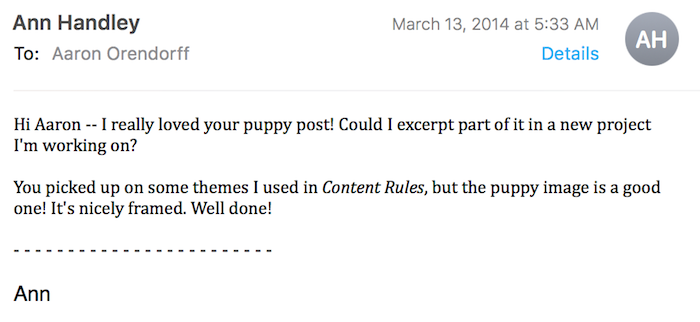

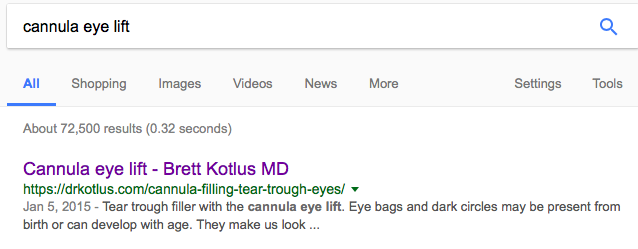
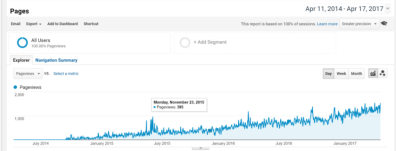





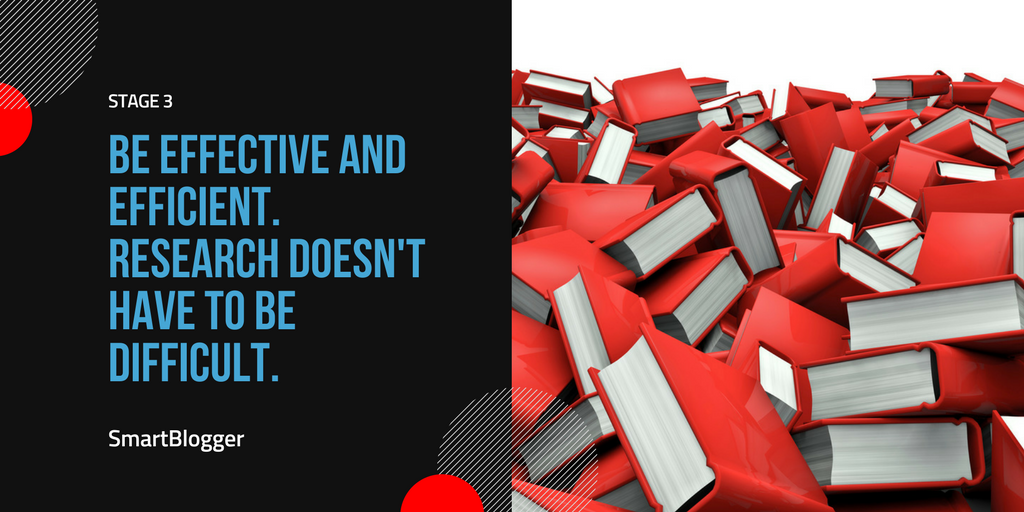



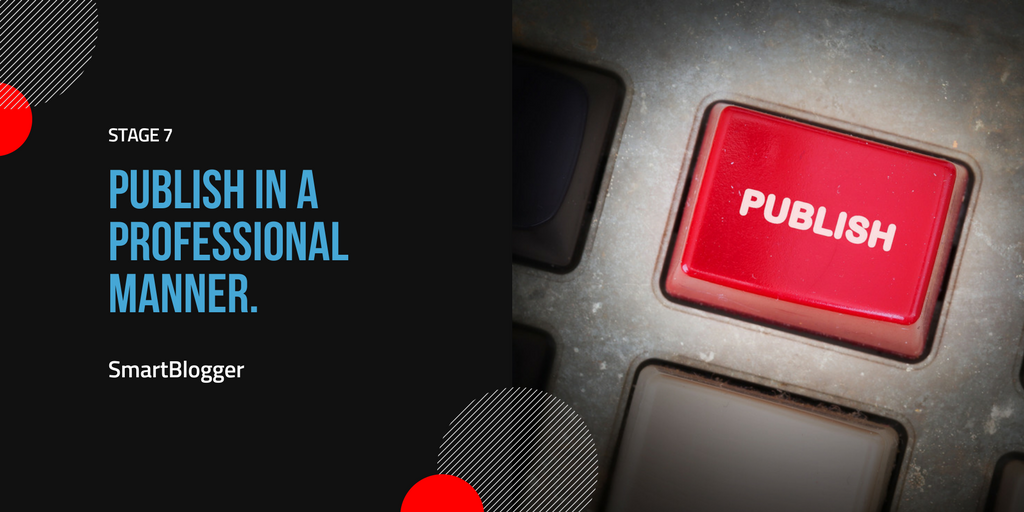
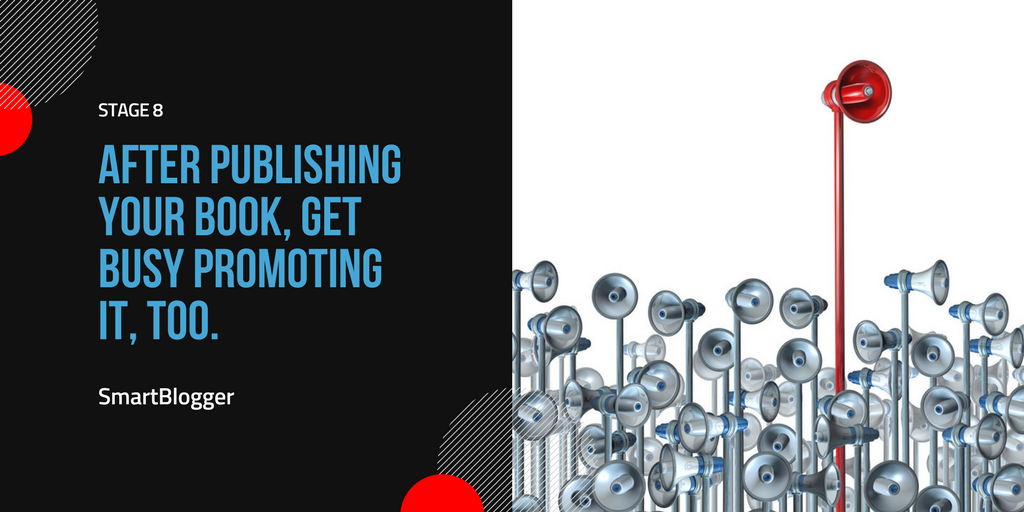




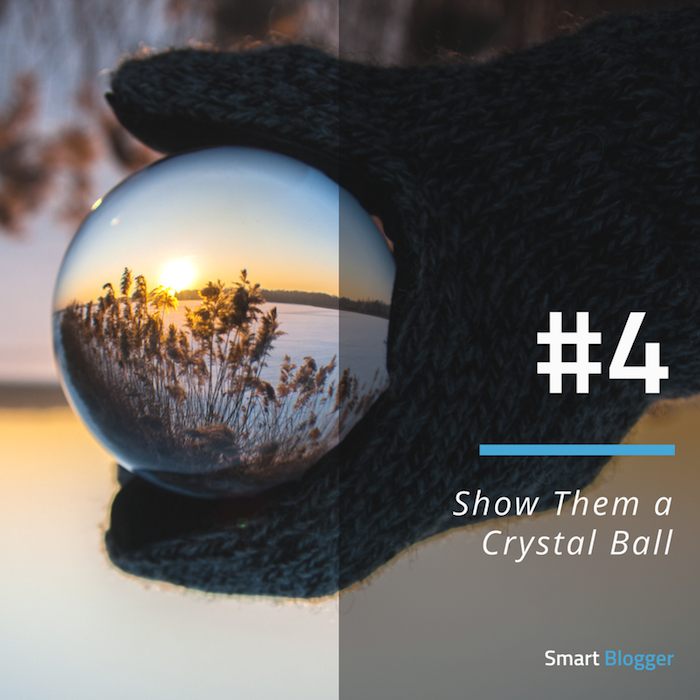


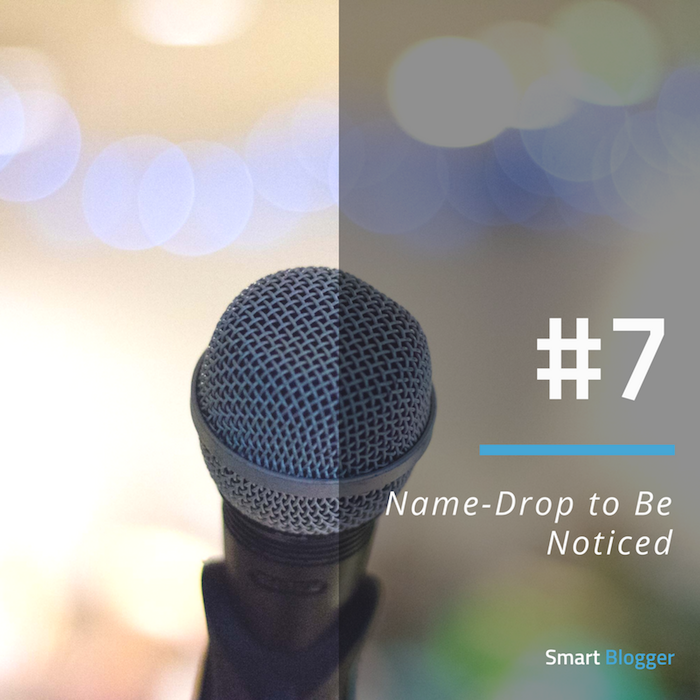



 To stand out from the crazy millions of mediocre blogs, you need to keep your foot on the pedal. (
To stand out from the crazy millions of mediocre blogs, you need to keep your foot on the pedal. (
